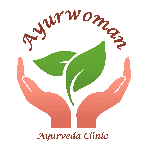What is Ayurveda
When we think about health we tend to think in terms of illness or wellness which is actually just a part of a bigger picture. For example the fact that a person is apparently well physically does not make such a person healthy. Such a person might have an unknown emotional disturbance and that person needs help just like someone who is down with a fever. Health is not just about whether the body’s organs are properly functioning or not as most conventional health systems view health, but a holistic health approach takes into consideration the mental, physical, emotional, social, and spiritual. The influence of a society on the health of an individual is also considered. One of such health systems which views health from a holistic approach is Ayurveda and we will be discussing it in a moment.
Ayurveda is an ancient health system which originates from India over 5000 years ago. It is considered to be one of the oldest health systems known to mankind. Ayurveda is a holistic health system which aims to prevent diseases by keeping not just the body but the mind and spirit healthy. The key principle is to harmonise the body, spirit and mind with the universe. Three ancient books namely Caraka Samhita, Sushruta Samhita, and Astanga Hridaya which are also known as the Great Trilogy were written in Sanskrit more than 2,000 years ago and are considered the main texts on Ayurveda. The key concepts in Ayurveda include the body’s composition (prakriti), the life forces (dosha), and the universe. These three must remain in harmony for a person to remain truly healthy.
Ayurveda and Body Types
To understand these concepts you can look at it this way. In the basic Ayurveda principles, everything in the universe including the body is made of five elements namely air, water, fire, earth and space. These elements combine to form the major body tissues and the life forces of the body. The life forces of the body are also called dosha and they include Vata (space and air), Pitta (fire and water) and Kapha (water and earth). Everyone has a unique mix of these three life forces controlling the functioning of the body.
The vata is energy that controls the circulation of air and blood round the body. People with vata as their predominant energy are more prone to diseases such as asthma, anxiety and heart diseases if vata energy goes out of balance.
Pitta energy controls the digestion of the body, regulates the body’s temperature and metabolism. People with pitta energy as their predominant energy are more prone to have anger management issues, ulcers and heart diseases if pitta energy goes out of balance.
Kapha energy is responsible for the supply of water to all parts of the body system and maintenance of the immune system. Kapha is usually associated with love and forgiveness. If kapha is out of balance it will lead to obesity, diabetes, insecurity and envy.
Everyone has these three life forces but one or two of the three life forces will be dominant to varying degrees. When they are out of balance they health problems arise. Ayurvedic treatment aims to restore this balance.
Treatments generally start with a diagnosis of dosha imbalance. Practitioner then uses an optimal combination of medicine, therapy or treatment to restore the dosha balance to cure the illness. Some of which may be:
- Herbal medicines: Herbal combinations are part of the Ayurveda medicine and are prescribed to help in balancing the body’s life forces (dosha).
- Abhyanga: This involves massaging the skin with herbal oil or oil combinations. It balances the fire and water energy otherwise known as the pitta energy to increase blood circulation and draw toxins out of the body through the skin.
- Pancha karma: this is done to balance the pitta dosha which controls digestion and removes toxins by using the elements of fire and water. Exercises are done to increase sweating and increase the body’s metabolism
- Rasayana: this is done by reciting mantras (repetitive words or phrases) while meditating and also using certain herbs for rejuvenation because it restores balance to the kapha energy.
- Yoga: this combines Pranayama, movement, and Rasayana. Yoga improves blood circulation and digestion because it balances the pitta energy, reduces blood pressure, cholesterol levels because it balances the kapha energy, it also balances the vata energy and hence it reduces anxiety, and chronic pain.

